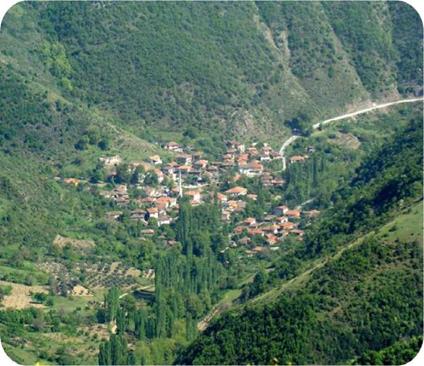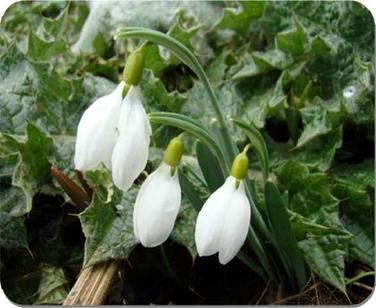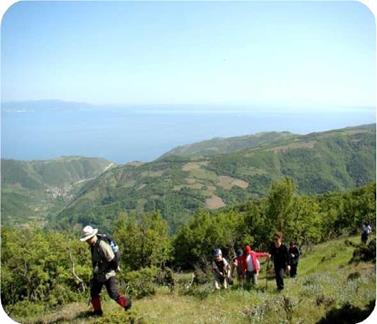Tourism and environment are representing common relationship concepts. Successful tourism activity needs clean and orderly environment (Kiper 2006). Rural tourism is both entagled with rural settlements and is based on natural resources (Soykan 2003).
Rural tourism, natural resources, cultural heritage, rural lifestyle and an integrated tourism is a type of local economic activities. Therefore, rural tourism in rural areas was carried out with a number of elements in their natural landscape and cultural landscape (water, vista, topography, vegetation, clean air), as well as in the variety of recreational activities suitable for all kinds of environments. Therefore, rural tourism and its natural assets and raw materials to create, as well as directing people to travel is an attractive force (Kiper, Ozyavuz & Korkut 2011).
Natural and cultural landscape values form a basis for rural tourism. These values are geographical position, micro-climatic conditions, existence of water, natural beauties, existence of natural vegetation, existence of wildlife, surface features, geomorphologic structure, local food, festivals and pageants, traditional agricultural structure, local handicrafts, regional dress culture, historical events and people, heritage appeals, architectural variety, traditional music and folk dance, artistic activities and so on (Gerry, 2001; Lane, 1993; Lanquar, 1995; Soykan, 1999; Briassoulis, 2002; Catibog-Sinha & Wen, 2008; Mlynarczyk, 2002; Drzewiecki, 2001, Kiper, T. 2006; Kiper, Korkut & Yilmaz, 2011).
Relationship between rural tourism and natural – cultural environment in Figure 3.
Involves short term travel to and from a destinatio
|
MASS TOURISM |
ALTERNATIVE TOURISM |
|||
|
Traditional or conventional tourism |
Specific interest or responsible tourism |
|||
|
Large numbers of tourists usually in staged settings |
Small numbers of tourists In authentic naturel or culture! settings |
|||
|
1 |
1 |
1 |
||
|
NATURAL |
CULTURAL |
EVENT |
||
|
Tourism in natural areas |
Heritage religions |
Sports festivals |
|
Adventure – emphasis on activity Nature based – primarily viewing of natural landscape Wildlife- primarily viewing of wildlife Ecotourism – includes educative and conservation supprting elements Rural tourism – primarily viewing of natural and cultural landscape |
Fig. 3. An overview of tourism (Dowling, Moore, Newsome 2002)
According to Weaver and Opperman (2000) tourism attractiveness is form of two: natural and cultural.
Natural attractiveness: the topography (mountains, canyons, beaches, caves, volcanoes, fossil sites, etc..), (Fig.4), climate (temperature, rainfall, humidity and so on. ), hydrology (lakes, rivers, waterfalls, hot springs, etc..), wildlife (mammals, birds, insects, etc..), the natural vegetation structure (Fig.5, Fig.6)
Cultural attractiveness: Archeological heritage (castle, cave, bridge etc.), religious structures (mosque, monastery etc.), conventional architecture, folkloric values, gastronomy, etc.
Rural tourism resources vary with the geographical, it mostly with natural style, toiling morphology, farm life and tradition primarily. It is affected by the climate and the seasons, so can satisfy tourist various needs. Rural tourism cultural resources include folk festivals, crafts, folk architecture, folk art, marriage customs, fun legends, and so on (Fan &Yang, 2011).
According to Tane and Thierheimer tourism in natural environments is mostly practiced by nature lovers that prefer isolation instead of urban crowds, and silence instead of the noise of tourist resorts. Being directly connected to rural tourism, it takes place in partially or completely isolated areas (mountain, sea, delta), being mostly destined to young or adult tourists.
|
|
|
|
|
Tourism in natural environments creates the possibility for tourists to practice climbing, fishing, hunting or other sports like dirt track, canoe racing, sky diving etc.
The relationship between rural tourism and other tourism forms practiced in the rural environment is extremely important, because it establishes the connections between natural, human, economical and social parameters, in order to insure all factors that lead to tourist growth and durable development (Tane Thierheimer, 2009).
According to Butler and Hall, to speak about rural tourism in a place, an economically viable rural population sustaining rural culture and identity through being engaged in rural activities is a prerequisite.
For, the target group will be the local community who is both the most influenced by tourism in the region and is the most influential on it. Certain states such as participation and embracing are prerequisites for sustainability (Kiper, 2011).






